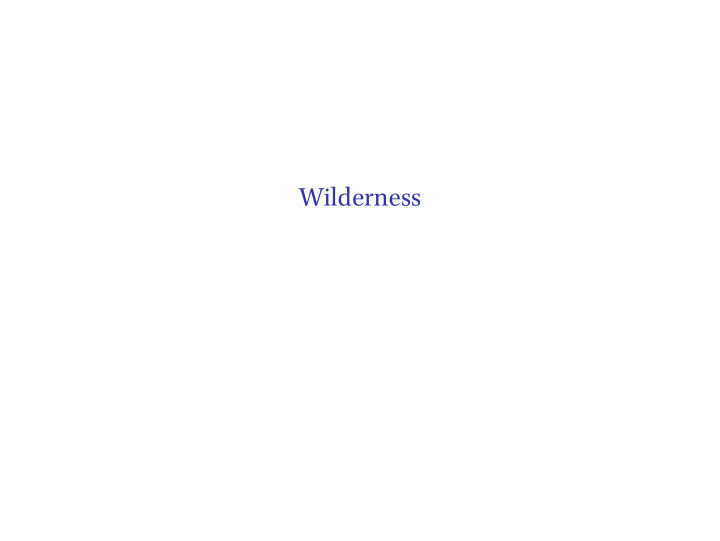



Wilderness
The Historical Forest ▶ Economic value ▶ Pastureland for swine ▶ Game ▶ Nuts, berries, honey ▶ Bark ▶ Firewood, construction wood ▶ Clearance → agricultural uses ▶ Royal hunt ▶ Refuge for outlaws ▶ Asceticism
(pestilence, urbanization) The Forest in European History Anglo-Norman times ▶ Continent ▶ Extensive forest cover until s. ix ▶ Three waves of clearance: ▶ ss. vi–vii (modest) ▶ ss. viii–ix (affecting most types of forest) ▶ ss. xii–xiii (peak deforestation) ▶ Reforestation s. xiv following abandonment of settlements ▶ Today’s forest cover much like that of 1400 ▶ Britain ▶ Extensive clearing in Roman times ▶ Reforestation for the royal hunt and royal exploitation in
Forest Associations (Saunders, The Forest of Medieval Romance ) NB “desert” refers to social emptiness, not an absence of flora or geographical features. ▶ Religious: the northern European desert ▶ Psychological: chaos and passion
Forest in Romance ▶ Geographic dualism with the court ▶ Domain in which to prove one’s individual worth ▶ Domain of fairies ▶ Domain of exile ▶ An environment that induces dream-visions
Bibliography I Bliss, A. J., ed. Sir Launfal . London and Edinburgh: Thomas Nelson, 1960. Mantel, Kurt. Wald und Forst in der Geschichte: Ein Lehr- und Handbuch . Alfend and Hannover: Schaper, 1990. Putter, Ad. “Sir Gawain and the Green Knight” and French Arthurian Romance . Oxford: Clarendon, 1995. Saunders, Corinne J. The Forest of Medieval Romance: Avernus, Broceliande, Arden . Cambridge: Brewer, 1993. Schmid-Cadalbert, Christian. “Der wilde Wald: Zur Darstellung und Funktion eines Raumes in der mittelhochdeutschen Literatur.” In Gotes und der werlde hulde: Literatur in Mittelalter und Neuzeit; Festschrift für Heinz Rupp zum 70. Geburtstag , edited by Rüdiger Schnell, 24–47. Bern and Stuttgart: Francke, 1989. Stauffer, Marianne. Der Wald . Bern: Francke, 1959.
Bibliography II P. S. Langeslag
Recommend
More recommend